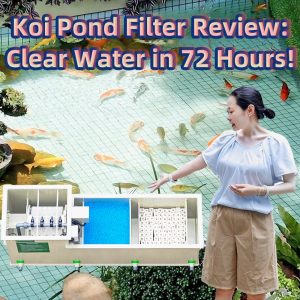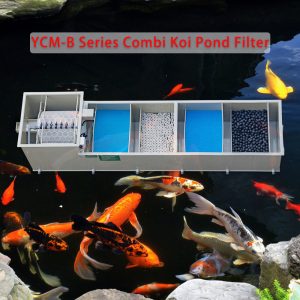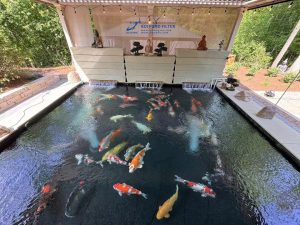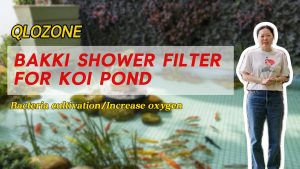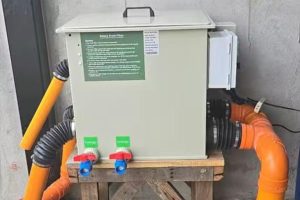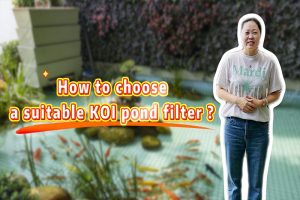Koi are very hardy creatures and can tolerate a wide range of temperatures. In their native waters, koi can withstand very warm and near freezing temperatures. When keeping in a backyard pond there are a few things you need to consider to keep your koi happy and healthy when the cold weather hits.
How to keep koi safe through the winter
If your fish live in an area where freezing temperatures can be reached, make sure you address the following list to ensure your fish survive the winter.
Insulation
The biggest consideration for koi wintering outdoors is to ensure that their water does not freeze into a hard block of ice. For most ponds, surface ice is fine. How many inches your pond freezes depends on your weather, so make sure your fish have enough room to hide safely under the ice. If your pond is overstocked there is a risk of the fish being packed too tightly causing oxygen depletion or producing too much ammonia, which can cause stress that can lead to secondary diseases.

Most koi ponds built underground are well insulated by the soil; this mainly allows for surface freezing. Above ground ponds or temporary cisterns run the risk of deep freezing. To allow space for your fish, wrap insulation, dirt or blankets around exposed walls. This will prevent your pond from freezing at greater depths.
Oxygen Acces
Even in a frozen pond, your fish need oxygen to survive. Hard ice can cut the fish off from life-saving oxygen and can easily destroy the entire pond. You must provide some air passage at the surface to keep the fish alive. You can do this by installing a pond de-icer, an aerator or a self-watering feature.
Pond de-icers work by thawing a small area of the pond surface to allow air to seep into the water. These need to be checked frequently to ensure proper operation. They do not heat the pond, only a small area of water on the surface of the pond.
The aerators work by preventing ice from completely covering the area directly above them. However, in very cold temperatures, the surface may still freeze. In addition, you do not want to use bottom bubblers to bring warmer water from the bottom of the pond to the surface. These air stones should be placed below the surface during the winter months.
The flow function works similarly to an aerator, constantly disrupting the formation of solid ice surfaces. They are slightly better than aerators, but if they are too large they can cause supercooling and will also freeze at very low temperatures.
Exposure to super cold temperatures, such as the air inside a tall waterfall, can overcool a pond by rapidly lowering the water temperature, usually when the sun goes down. The sudden drop in temperature can negatively affect your koi and potentially kill them. If you have a tall water feature it is advisable to avoid it in very cold weather conditions.
Feeding
At colder water temperatures, your koi fish’s metabolism will be at an extremely low level. It is not recommended to feed your fish if the temperature is going to drop below 45 degrees Fahrenheit / 7 degrees Celsius. When the water is warmer your fish may beg for food, but it is best to leave their gastrointestinal tract free of food, which may stop flowing if the water temperature is expected to get cold. Often koi do well not to want food when the temperature drops, but if you still get hungry faces, tell them it is for their own good.

